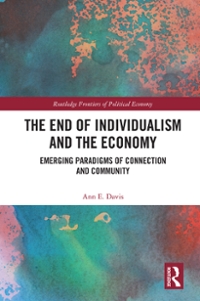PPlease tutors your help is needed here
2. Currently, Krona has currently no compensation scheme for workers infected with the disease and you are advising the government on the introduction of such a scheme (suppose for this exercise that there are no other unemployment or sick benefits and this would most likely concern any future disease). Model the economy with identical individuals who earn a wage of 500 while working and 0 when sick with the disease. With probability q, the individuals get sick with the disease and cannot work. When sick, individuals would receive a sickness compensation s from the government. To finance the scheme, when working individuals pay lax of (500*t) where t is the tax rate. u(c) = c1/$ denotes the individuals utility from consumption of c in any given state. a) Write down the individual's expected utility as function of s, q and t. [3 marks] b) What is the government's budget constraint for an actuarially fair compensation scheme; write down what is balanced government budget in terms of s, q and t. [2 marks] c) Find the value of compensation s that maximizes individuals expected utility, assuming a balanced budget. [6 marks] d) What is the tax rate t required to finance the compensation maintaining a balanced budget? Discuss very briefly the intuition (2 sentences). [4 marks] e) Discuss briefly the merits of the introduction of such a disease specific compensation scheme, including a brief discussion of moral hazard. [5 marks]53. 54. 55. 56. 57. 58. 59. . What is the prime interest rate and how is it related to the federal funds rate? 61. 62. 63. . How did the Fed initiate a restrictive monetary policy before and after the mortgage debt 65. 66. JL' J ' " ' u LLJ' money? Which tool is the most used one by the FOMC? What happens to the supply of money when the Fed buys securities and when it sells securities? What is repo and reverse repo transactions? What happens to the supply of money when the Fed raises the reserve ratio and when it lowers it? What is the interest rate that the Federal Reserve changes to commercial banks when it lends money to commercial banks? Which monetary policy tool was introduced in 2008? What is the federal funds rate? How did the Fed initiate an expansionary monetary policy before and after the mortgage debt crisis? What is zero lower bound problem? What is quantitative easing? crisis? Skip the Taylor Rule. What is the cause-and-effect chain of expansionary and restrictive monetary policy? What are problems and complications of monetary policy? (lags, cyclical asymmetry, the liquidity trap) MORE EXERCISES 1. Transition dynamics: What is the principle of transition dynamics in the com- bined Solow-Romer model? 2. Long-run growth: Growth in the combined Solow-Romer model is faster than growth in the Romer model. In what sense is this true? Why is it true? 3. Balanced growth: Suppose we observe the following growth rates in various economies. Discuss whether or not each economy is on its balanced growth path. (a) A European economy: gy/L = 0.03, gKIL = 0.03. (b) A Latin American economy: gy/L = 0.02, gKIL = 0.01. (c) An Asian economy: gy/L = 0.06, gKIL = 0.15. 4. Transition dynamics in the combined Solow-Romer model: Consider the com- bined model studied in this appendix. Suppose the economy begins on a bal- anced growth path in the year 2000. Then in 2030, the depreciation rate d rises permanently to the higher level d'. (a) Graph the behavior of output per person over time, using a ratio scale. (b) Explain what happens to the growth rate of output per person over time and why. 5. The combined Romer-Solow model (1): Make one change to the basic combined model that we studied in this appendix: let the production function for outputProblem 4. Driving risk and insurance (38 points). Robert is an expected-utility maximizer that likes to drive fast, so his probability of an accident is 2/3. Robert's preferences over wealth are u (w) = w.5. Suppose that Robert's initial wealth is $100. If Robert has an accident, he incurs a $51 loss. 1. What is Robert's expected utility? (5 points) 2. Now, assume there is one insurance company in existence with one policy available: Full insurance. That is to say, the insurance company charges a fixed premium and then pays Robert $51 if he gets in an accident. If the insurance company is risk neutral, what is the premium a they need to charge to break even? (5 points) 3. Compute the expected utility for Robert if he purchases the insurance at premium . Will Robert purchase the insurance? (Note: (66)" is approximately 8.1) (5 points) 4. Repeat the exercise for the case in which Robert has utility function u (w) = w. What is his utility if he does/does not purchase the insurance? Does he purchase the insurance? (Note: (66)- = 4356 and (49) = 2401) (6 points) 5. Discuss the intuition for why Robert purchases the insurance in one case, but not in another. (5 points) 6. (Harder) Consider now the general case with u (w) = w" with a > 0. Remember that Jensen's inequal- ity says Ef (x) 2 f (Ex) if and only if f concave. Use Jensen's inequality to show analytically that, in fact, Robert purchases the insurance at premium a if and only if a










